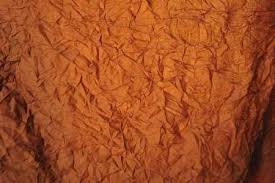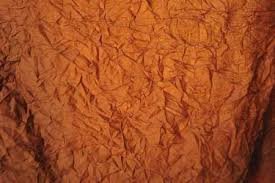

CRUSHING

- Nov 23rd, 2024
Crushing services for fabrics refer to processes that intentionally wrinkle, distort, or give a fabric a textured or worn appearance. This is often done for aesthetic reasons or to create a certain "lived-in" or vintage look. The method used to achieve this effect can vary depending on the fabric type and desired result. Here are some common fabric crushing techniques:
1. Mechanical Crushing
- Process: Fabric is passed through large rollers or machines that press and wrinkle it, creating a crushed effect.
- Common Fabrics: Used on fabrics like silk, cotton, linen, and synthetics.
- Result: The fabric has permanent or semi-permanent creases and wrinkles, giving it a textured, crinkled look.
2. Chemical Crushing
- Process: A chemical treatment is applied to fabrics that causes them to wrinkle or shrink. This can involve substances like acid or alkali solutions that interact with the fibers to create a crushed effect.
- Common Fabrics: Frequently used on silk and other delicate fabrics that need a softer, more fluid drape.
- Result: The fabric appears "crushed" or wrinkled and may retain the look even after washing.
3. Heat Treatment
- Process: Heat is applied in a controlled manner to shrink or distort the fibers. Often combined with mechanical or chemical methods, heat can help set the wrinkles in a fabric.
- Common Fabrics: Works well on polyester, nylon, and some cotton blends.
- Result: Heat setting creates permanent creases and texture that mimic the look of crushed fabric.
4. Hand-Crushing
- Process: Sometimes, fabrics are crushed manually by bunching or scrunching them by hand, followed by a pressing process or treatment to set the texture.
- Common Fabrics: Natural fabrics like cotton, linen, or silk can be hand-crushed for a more organic or irregular look.
- Result: A less uniform, more natural-looking crushed texture.
5. Plissé Fabric
- Process: This is a specialized type of fabric that is treated with a chemical (usually sodium hydroxide) to create pleats or crinkles. The fabric is then heat-set to make the crinkle permanent.
- Common Fabrics: Usually applied to cotton and synthetic blends.
- Result: The fabric has a distinct, permanent crinkled pattern.
Uses of Crushed Fabrics:
- Fashion: Crushed fabrics are used in clothing, particularly in dresses, skirts, and blouses, to create a textured, romantic look.
- Home Decor: Crushed fabrics are popular in curtains, cushions, and upholstery for their rich, tactile finish.
- Accessories: Scarves, shawls, and bags made from crushed fabrics often have a unique, luxurious appearance.
Important Considerations:
- Fabric Type: Some fabrics, especially natural fibers like cotton, linen, and silk, crush better and maintain their texture longer than others.
- Durability: Some crushing methods (especially chemical treatments) can weaken fabrics over time, so the method chosen should align with the intended use.
- Maintenance: Crushed fabrics may need special care in washing or ironing, depending on the method used to create the texture.
If you're looking for fabric crushing services, many textile manufacturers and finishing companies offer this as part of their fabric treatment services. You can typically find them through textile suppliers, fabric mills, or companies specializing in textile finishing or garment manufacturing.












